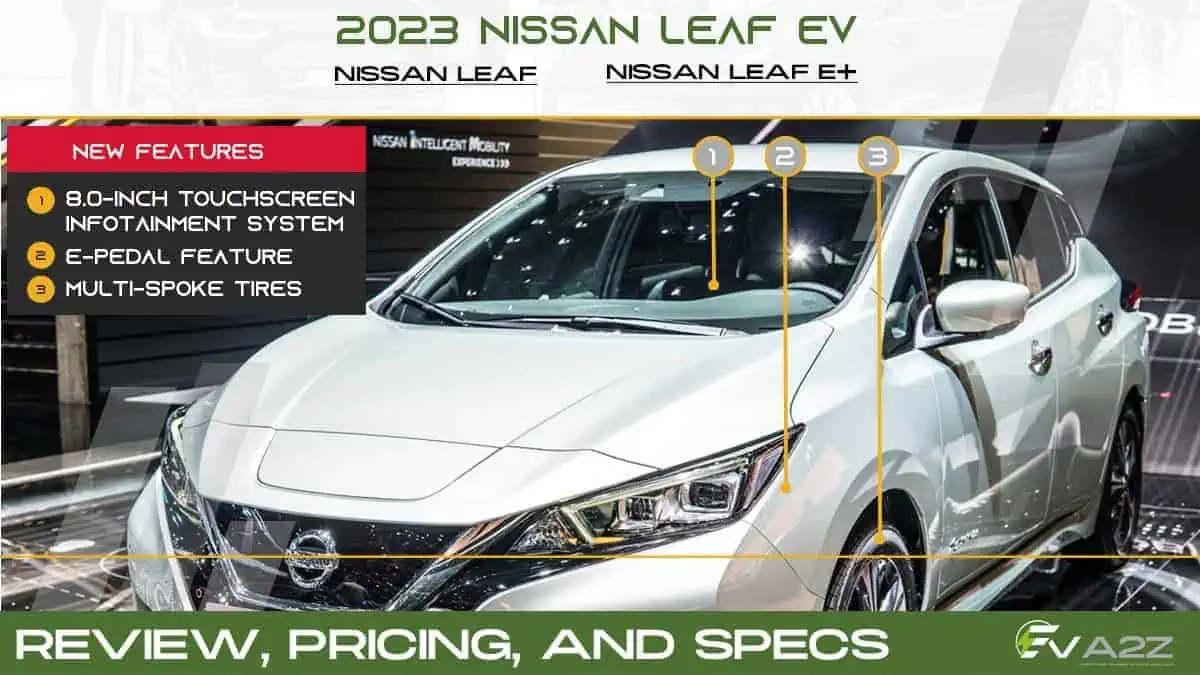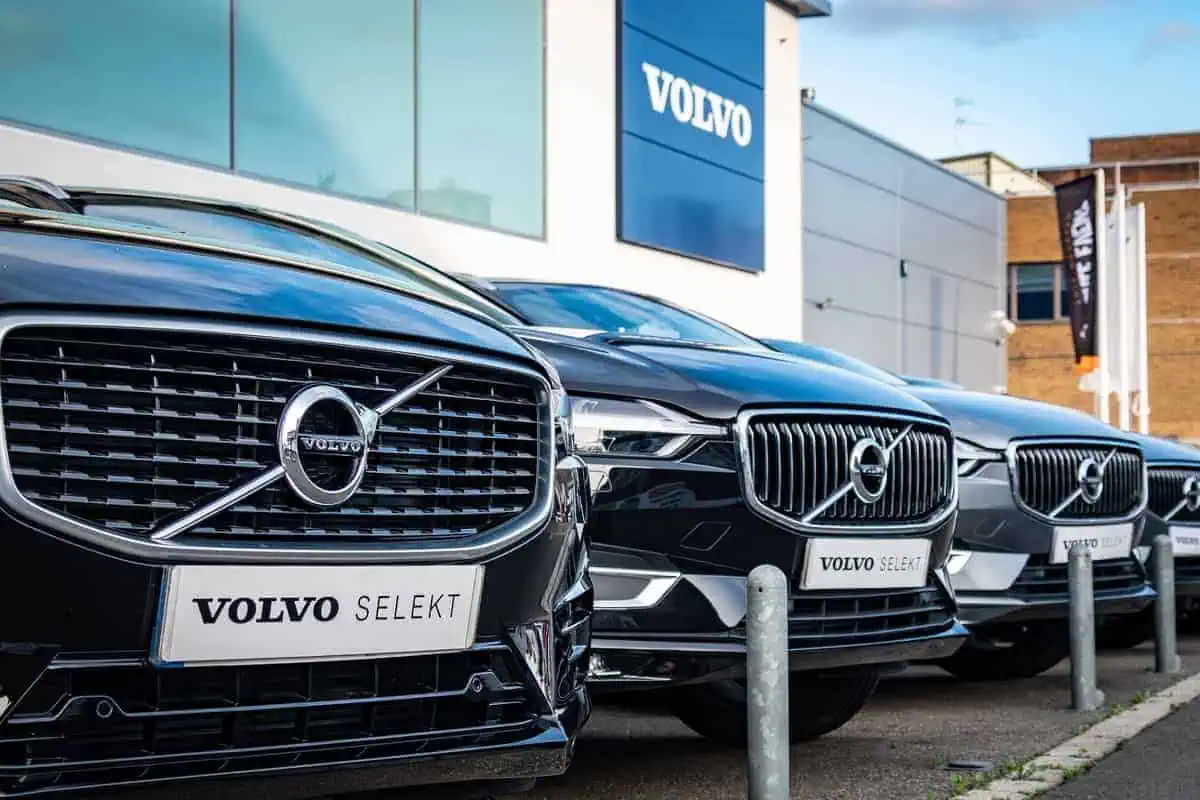The 2023 Nissan Leaf EV distinguishes between being attractive on paper and competitive. EVs with a starting price below $30,000—before tax credits—get our attention.
The Leaf has a lower driving range and less user-friendly charging technology than its competitors. The Chevy Bolt EV, Kia EV6, and Tesla Model 3 beat the Leaf’s 200-mile range.
Additionally, not all public charging stations support Nissan’s CHAdeMO connector. The Leaf is a low-cost entry into EVs for city drivers who can charge at home.
Its small hatchback makes it easy to maneuver in city traffic and find street parking. Its cabin is comfortable, spacious, and tech-equipped for a small car.
Unfortunately, many competitors offer more daily usability, range, and charging stations.
What is in the 2023 model
Nissan’s electric vehicle gets some styling updates for 2023, including a new grille, front bumper, and exterior lighting.
The exterior of the Leaf has been updated with new multi-spoke tires and a luminous Nissan badge. The lineup has been pared down to just the base S and the higher-end SV Plus.
The SV Plus is the best value here because it has a fair price, the most extended driving range, a more powerful electric motor, and an excellent standard equipment package.
It has an 8.0-inch touchscreen infotainment system with Apple CarPlay and Android Auto, automated climate control, smart key entry with push-button start, and auto headlamps.
| Nissan Leaf S | $29,135 |
| Nissan Leaf SV Plus | $37,135 |
Electric Vehicle Motor, Power, and Performance
Leafs have front-wheel drive.
The standard Leaf S has a 147-horsepower electric motor and a 40.0-kWh battery pack, both small by today’s standards.
The Leaf SV Plus receives a more powerful 214-hp electric engine and a bigger 62.0-kWh battery. This results in slower than the Bolt EV and the Model 3. Improving to the more powerful Plus model will undoubtedly result in faster acceleration, but we will know once we can test one.
The e-Pedal feature on the Leaf enables the driver to switch between regenerative braking modes, one of which permits the car to coast when the driver lifts off the accelerator and another that hinders the vehicle when you take your foot off the pedal and uses that energy to charge the battery.
| Vehicle Type | front-motorfront-wheelpassenger4-door hatchback |
| Motor Type | permanent-magnet synchronous AC motor215 hp251 lb-ft62.0-kWh lithium-ion battery pack |
| Transmission | 1-speed direct-drive |
Battery Life, Range, and Charging
The Leaf can be charged by plugging it into a standard 120-volt or 240-volt outlet, but charging times vary significantly between the two.
Nissan claims that on a 240-volt connection, both the classic Leaf’s battery and the bigger one in the Leaf Plus can be recharged in seven hours. All trims include a DC fast-charging connection as standard. The Leaf S has a 40.0-kWh battery with a relatively short range of 149 miles.
This may be sufficient for some drivers with short commutes, but it is less than half of the range provided by the Model 3’s Long Range model. Because of its larger battery pack, the SV Plus has an EPA-rated driving range of 215 miles.
| Highway range | 180 miles |
| EV range | 215 |
Real-World MPGe and Fuel Economy
The SV Plus test vehicle outperformed its EPA highway rating of 94 MPGe, achieving 98 MPGe on our 75-mph fuel-economy route.
Moreover, it saw 180 miles of range during this test; on the highway, EVs typically get less than their EPA-rated number. Visit the EPA’s website for more information on the Leaf’s fuel economy.
| Zero to 60 mph | 6.8 sec |
| Zero to 100 mph | 19.9 sec |
| Rolling start | 5-60 mph: 6.8 sec |
| Top gear | 30-50 mph: 2.4 sec |
| Top gear | 50-70 mph: 3.7 sec |
| 1/4 mile | 15.4 sec at 92 mph |
| Top speed | 106 mph |
| Braking | 70-0 mph: 190 ft |
| Roadholding | 300-ft-dia |
| Skidpad | 0.76 g |
| Observed | 90 MPGe |
| 75-mph highway driving | 98 MPGe |
| CombinedCityHighway | 104 MPGe114 MPGe94 MPGe |
Cargo, Interior, and Comfort
Although the Leaf’s cabin is mostly black plastic, the well and uniform textures keep it from looking cheap.
A big analog speedometer sits next to a 7.0-inch digital display that can be retooled to show a wide range of displays. The seats in the Leaf are La-Z-Boy comfortable, and the spacious rear seat has plenty of room for adults.
Although the Leaf’s back seat does not fold flat, we found its cargo capacity to be one of the best in its class. We could fit seven carry-on luggage behind the back seat, and 19 with the rear seat rolled up. In comparison, the cargo area of the Bolt EV held five people and could hold up to 16 people with the back seats folded.
The Niro EV has a more SUV-like body style, but the Leaf remains the leader among electric vehicles.
| Wheelbase | 106.3 in |
| Length | 176.4 in |
| Width | 70.5 in |
| Height | 61.4 in |
| Passenger volume | 93 cu ft |
| Cargo volume | 24 cu ft |
| Curb weight | 3831 lb |
Connectivity and infotainment
All Leaf models feature the same 8.0-inch infotainment display, which supports Apple CarPlay and Android Auto; navigation is optional. While not visually appealing, the updated Nissan Connect software interface is straightforward and responsive to inputs.
The Leaf’s classic six-audio system may disappoint audiophiles; a seven-speaker Bose system is optional.
Features for Driver Assistance and Safety
Nissan’s Safety Shield 360 suite of driver-assistance functions is standard across the lineup, with the brand’s innovative ProPilot Assist semi-autonomous driving mode available.
Visit the National Highway Traffic Safety Administration (NHTSA) and Insurance Institute for Highway Safety (IIHS) websites for more details on the Leaf’s crash-test results.
The following are important safety features:
Automatic emergency braking with human detection is standard.
Blind-spot checking with a rear cross-traffic warning system is standard.
Adaptive cruise control with the semi-autonomous driving mode is available.
Warranty and Maintenance Protection
Nissan provides the same basic warranty package as the rest of the Nissan lineup; meanwhile, the Leaf’s battery is protected for up to eight years or 100,000 miles.
The limited warranty lasts three years or 36,000 miles.
The powertrain warranty is valid for five years or 60,000 miles.
The battery warranty is valid for eight years or 100,000 miles.






